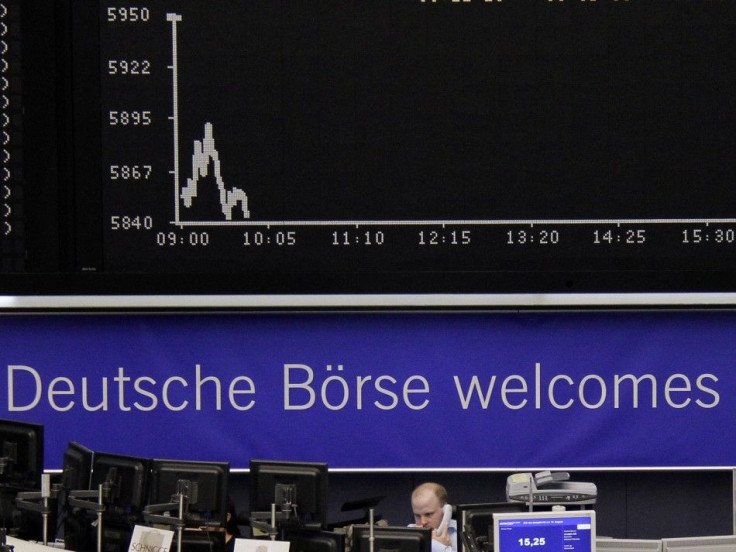Gold at New Highs as Growth Fears Hit Markets

Renewed worries about Europe's debt crisis and a raft of weak U.S. economic data hit global markets on Thursday, driving down stocks and oil prices and pushing U.S. bond yields to record lows while pushing gold to a record high.
Several U.S. economic reports added to the market's funk, with a drop in the Philadelphia Federal Reserve Bank's business activity index to minus 30.7 especially unnerving investors as it is a forward-looking indicator of national manufacturing.
The reports showed factory activity in the Mid-Atlantic region plunged in August to its lowest level since March 2009; existing home sales unexpectedly fell in July. The number of Americans seeking new jobless benefits climbed last week and consumer prices rose at the fastest pace in four months in July.
The market is in meltdown mode; the data continues to stink. I don't know that there's much more to be said. We continue to be in a soft patch, said Sal Catrini, managing director for equities at Cantor Fitzgerald & Co in New York.
Sentiment worsened after the Philly Fed report as any reading below zero indicates contraction in factories in eastern Pennsylvania, southern New Jersey and Delaware.
Aversion to risk swept financial markets, with corporate bonds, industrial commodities and higher-yielding currencies sliding and assets viewed as safe-havens, such as gold, government bonds and the dollar, gaining.
U.S. Treasuries prices soared and the benchmark 10-year note yields fell below 2.0 percent for the first time as investors snapped up the government bonds on fears over a global economic slowdown.
The benchmark notes were last up 1-7/32 in price to yield 2.03 percent after dropping to a record low of 1.98 percent.
Gold rallied to its second record high in a week. Spot gold hit a record $1,825.99, although it is still off its inflation-adjusted peak above $2,000 struck in 1980.
Short-term money markets showed further signs of bank stress emanating from Europe's fiscal strains. The benchmark for unsecured dollar loans between banks, 3-month LIBOR, rose to its highest in 4-1/2 months, the latest in recent peaks.
Investors also pulled back over the last week from the commercial paper market, a key source of short-term funding for banks and businesses. These strains have contributed to the stock sell-off and the rush into gold and government bonds.
The U.S. dollar and yen firmed as global growth anxiety and worries about European banks drove investors to the relative safety of both currencies.
The ICE Futures dollar index was up 0.9 percent at 74.363 while the euro fell 0.9 percent to $1.42908, tracking a more than 4 percent fall in European shares.
We have much lower risk appetite today and that's why we're seeing the dollar strengthen, said Ray Attrill, senior currency strategist, at BNP Paribas in New York.
Stocks are down across the board and that may be due to some global growth worries, Attrill said.
U.S. stocks also tumbled more than 4.0 percent, pulled lower by bank shares after The Wall Street Journal reported that regulators were intensifying their review of the U.S. units of European banks.
The sell-off is rooted in the European banking system, said Jack de Gan, chief investment officer at Harbor Advisory Corp in Portsmouth, New Hampshire.
It reflects continued concern that sovereign debt issues indicate we're going to have to bail out all those banks again. And if there's stress in major European banks, it will affect U.S. banks too.
The Dow Jones industrial average was down 457.32 points, or 4.01 percent, at 10,952.89. The Standard & Poor's 500 Index was down 50.85 points, or 4.26 percent, at 1,143.04. The Nasdaq Composite Index was down 114.70 points, or 4.57 percent, at 2,396.78.
Crude prices tumbled on the prospect of declining demand.
Brent fell 2.7 percent to $107.66 a barrel, while U.S. light sweet crude oil 5.1 percent to $83.11 a barrel.
© Copyright Thomson Reuters 2024. All rights reserved.





















